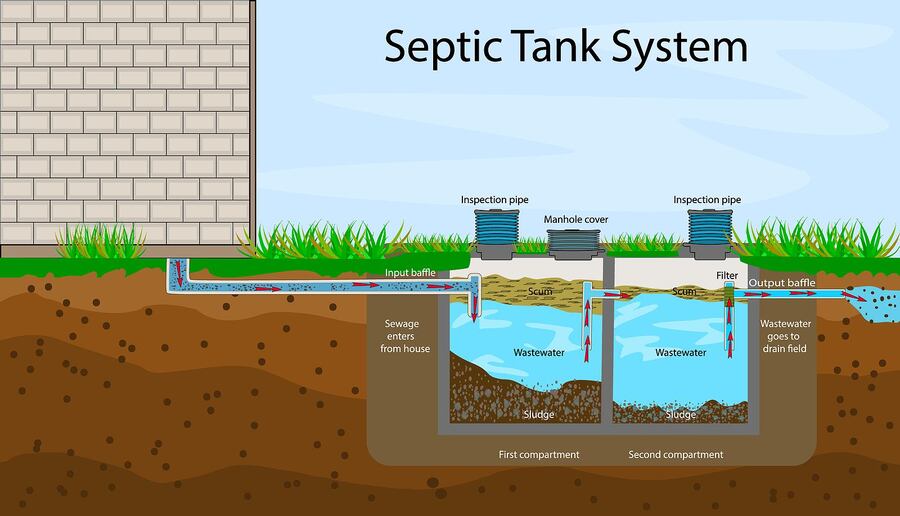Menu
"WE NOT ONLY PUMP YOUR TANK - WE CLEAN IT!"
WE NOT ONLY PUMP YOUR TANK - WE CLEAN IT! Free Septic System Inspection ($99 Value)
Free enzyme treatment - Financing Available
"WE NOT ONLY PUMP YOUR TANK - WE CLEAN IT!"
WE NOT ONLY PUMP YOUR TANK - WE CLEAN IT! Free Septic System Inspection ($99 Value)
Free enzyme treatment - Financing Available
Septic systems are on-site wastewater treatment facilities that both contain and treat the waste and wastewater produced by the household. They rely on chemical, mechanical, and biological processes to break down and safely dispose of waste and wastewater, and one of the key players in the system is bacteria.
 Nov 03, 2024
Nov 03, 2024
We’ve been told that bleach and chlorine kill bacteria, so why on earth would chlorine have a role in a septic tank installation? Believe it or not, there’s a very specific and beneficial reason for chlorine in certain septic setups.
Gurgling sounds coming from your…
Skipping routine septic service might…
You start the day before…
Owning a septic system means…
In this brief article brough to you by Septic Blue, your local septic company, we explore the purpose of chlorine in aerobic septic systems, how it works, and how it’s used safely without disrupting the delicate balance of helpful bacteria.
To understand why chlorine has a place in aerobic septic systems, it helps to know the basic difference between aerobic and anaerobic systems. Most traditional septic systems are anaerobic; this means they break down waste in an oxygen-free environment. Anaerobic bacteria thrive in these conditions by breaking down solid waste into sludge that settles at the bottom of the tank.
Aerobic septic systems, on the other hand, introduce oxygen into the process. These systems typically have three main compartments: a trash tank where solids settle, an aeration chamber where oxygen is pumped in, and a final clarifier tank. The aeration chamber is where aerobic bacteria work hard to break down waste and treat wastewater.
The water treated by aerobic bacteria is much cleaner than the water in traditional anaerobic systems. Even after aeration, though, there can still be some lingering bacteria, viruses, and pathogens. This is where chlorine plays a crucial role: disinfection.
Chlorine tablets or liquid chlorine are often added to the final compartment of the system to disinfect the treated wastewater before it exits into the environment. This final stage of chlorination ensures that the water being released is as safe as possible. In short, chlorine kills any remaining harmful bacteria and pathogens.
The answer lies in where the chlorine is introduced within the system. In an aerobic septic setup, chlorine is only added after the water has moved through the aeration and clarification stages. It does not come in contact with the beneficial aerobic bacteria doing the heavy lifting in earlier stages.
Long story short: Since the chlorine is only introduced in the final treatment chamber, it doesn’t interfere with the biological processes taking place in the aeration chamber.
You’re probably already familiar with septic tank pumping, which involves removing a majority of excess sludge and scum from the tank in order to restore capacity. However, there are other maintenance tasks to note.
Septic tank cleaning in Saint Cloud, for example, is a more comprehensive form of septic pumping. It involves removing sludge and scum but also includes a good washing of the walls and baffles to reduce the risk of blockages.
Whether you need routine maintenance or an emergency septic tank repair, the uniformed septic specialists in Lakeland at Septic Blue are here to help. Call or message us today to schedule a convenient appointment or request an urgent dispatch to your home. We are ready when you are.